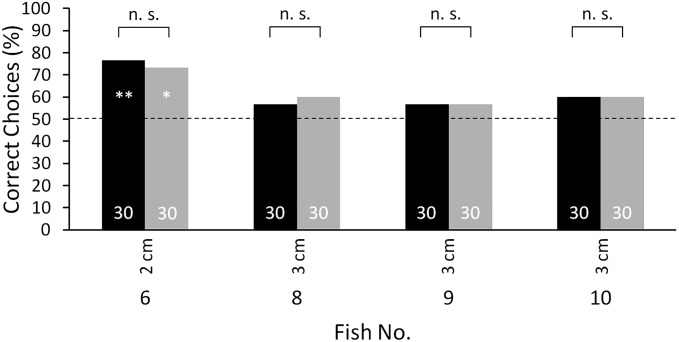Fig. S3.
Discrimination performance of four of the electrically trained fish (fish 6 and 8–10) during control tests, which ensured that there was no influence of the hoods on the discrimination performance. Electrical tests were conducted with the hood-covered metal objects (black) and with conductive, red-colored agarose objects in the dark (gray) at 2-cm respective to 3-cm object distances. The exact Fisher test was used to test for significant differences between the performances (n.s.: P > 0.05). There were no significant differences between both conditions, showing that there was no influence of the hoods on the discrimination performance. Thus, performance differences between electrical tests and tests with the conductive red-colored agarose objects in light (tests with both senses) (Fig. 2, red and black curve) were not due to differences in the experimental conditions but originated from the additional visual input. For a further description, see Fig. 1.

